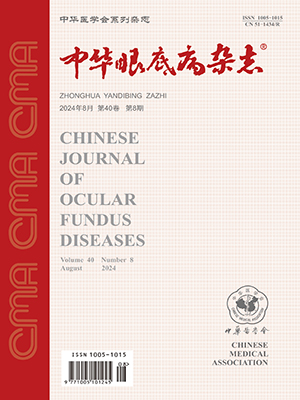| 1. |
吴大蔚, 沈羡云. 失重或模拟失重时脑循环的改变[J]. 航天医学与医学工程, 2000, 13(5): 386-390. DOI: 10.3969/j.issn.1002-0837.2000.05.018.Wu DW, Shen XY. Changes of cerebral circulation during weightlessness or simulated weightlessness[J]. Space Medicine & Medical Engineering, 2000, 13(5): 386-390. DOI: 10.3969/j.issn.1002-0837.2000.05.018.
|
| 2. |
Kamiya H, Sasaki S, Ikeuchi T, et al. Effect of simulated microgravity on testosterone and sperm motility in mice[J]. J Androl, 2003, 24(6): 885-890. DOI: 10.1002/j.1939-4640.2003.tb03140.x.
|
| 3. |
Nelson ES, Mulugeta L, Myers JG. Microgravity-induced fluid shift and ophthalmic changes[J]. Life (Basel), 2014, 4(4): 621-665. DOI: 10.3390/life4040621.
|
| 4. |
Krasnov IB, Gulevskaia TS, Morgunov VA. Morphology of vessels and vascular plexus in the rat's brain following 93-day simulation of the effects of microgravity[J]. Aviakosm Ekolog Med, 2005, 39(1): 32-36.
|
| 5. |
Shen G, Link S, Kumar S, et al. Characterization of retinal ganglion cell and optic nerve phenotypes caused by sustained intracranial pressure elevation in mice[J]. Sci Rep, 2018, 8(1): 2856. DOI: 10.1038/s41598-018-21254-8.
|
| 6. |
Nusbaum DM, Wu SM, Frankfort BJ. Elevated intracranial pressure causes optic nerve and retinal ganglion cell degeneration in mice[J]. Exp Eye Res, 2015, 136: 38-44. DOI: 10.1016/j.exer.2015.04.014.
|
| 7. |
Frishman L, Sustar M, Kremers J, et al. ISCEV extended protocol for the photopic negative response (PhNR) of the full-field electroretinogram[J]. Doc Ophthalmol, 2018, 136(3): 207-211. DOI: 10.1007/s10633-018-9638-x.
|
| 8. |
Park JC, Moss HE, McAnany JJ. Electroretinography in idiopathic intracranial hypertension: comparison of the pattern ERG and the photopic negative response[J]. Doc Ophthalmol, 2018, 136(1): 45-55. DOI: 10.1007/s10633-017-9620-z.
|
| 9. |
Yu M, Sturgill-Short G, Ganapathy P, et al. Age-related changes in visual function in cystathionine-beta-synthase mutant mice, a model of hyperhomocysteinemia[J]. Exp Eye Res, 2012, 96(1): 124-131. DOI: 10.1016/j.exer.2011.12.011.
|
| 10. |
Pang JJ, Chang B, Kumar A, et al. Gene therapy restores vision-dependent behavior as well as retinal structure and function in a mouse model of RPE65 leber congenital amaurosis[J]. Mol Ther, 2006, 13(3): 565-572. DOI: 10.1016/j.ymthe.2005.09.001.
|
| 11. |
Wang H, Duan J, Liao Y, et al. Objects mental rotation under 7 days simulated weightlessness condition: a ERP study[J]. Front Hum Neurosci, 2017, 11: 533. DOI: 10.3389/fnhum.2017.00553.
|
| 12. |
林煜, 刘宗琳, 骞爱荣, 等. 一种模拟失重性骨丢失小鼠尾悬吊模型的建立[J]. 航天医学与医学工程, 2012, 25(4): 239-242.Lin Y, Liu ZL, Qian AR, et al. Construction of a modified mouse tail-suspension model for space bone loss[J]. Space Medicine & Medical Engineering, 2012, 25(4): 239-242.
|
| 13. |
Van Ombergen A, Demertzi A, Tomilovskaya E, et al. The effect of spaceflight and microgravity on the human brain[J]. J Neurol, 2017, 264(Suppl 1): S18-22. DOI: 10.1007/s00415-017-8427-x.
|
| 14. |
Berdahl JP, Yu DY, Morgan WH. The translaminar pressure gradient in sustained zero gravity, idiopathic intracranial hypertension, and glaucoma[J]. Med Hypotheses, 2012, 79(6): 719-724. DOI: 10.1016/j.mehy.2012.08.009.
|
| 15. |
Laurie SS, Vizzeri G, Taibbi G, et al. Effects of short-term mild hypercapnia during head-down tilt on intracranial pressure and ocular structures in healthy human subjects[J/OL]. Physiol Rep, 2017, 5(11): 13302[2017-06-01]. https://doi.org/10.14814/phy2.13302. DOI: 10.14814/phy2.13302.
|
| 16. |
赵军, 胡莲娜, 梁会泽, 等. 模拟失重状态对正常人远视力、近视力、近点、立体视觉及眼压的影响[J]. 眼科新进展, 2011, 31(7): 642-644.Zhao J, Hu LN, Liang HZ, et al. Influence of simulated weightlessness on distance vision, near vision, near point, stereoscopic vision and intraocular pressure[J]. Rec Adv Ophthalmol, 2011, 31(7): 642-644.
|
| 17. |
Kramer LA, Hasan KM, Sargsyan AE, et al. MR-derived cerebral spinal fluid hydrodynamics as a marker and a risk factor for intracranial hypertension in astronauts exposed to microgravity[J]. J Mag Reson Imaging, 2015, 42(6): 1560-1571. DOI: 10.1002/jmri.24923.
|
| 18. |
刘雪芳, 杜继臣. 年龄因素对闪光视觉诱发电位无创颅内压监测技术检测颅内压准确性的影响[J]. 中国老年学杂志, 2017, 37(17): 4360-4362. DOI: 10.3969/j.issn.1005-9202.2017.17.093.Liu XF, Du JC. Effect of age on accuracy of FVEP in noninvasively monitoring intracranial pressure[J]. Chinese Journal of Gerontology, 2017, 37(17): 4360-4362. DOI: 10.3969/j.issn.1005-9202.2017.17.093.
|




